This morning, we woke up at the Denali Princess Wilderness Lodge. Owned by the same company that operates Princess Cruises, the lodge aims to cater to a broad audience, often attempting to meet the expectations of the lowest common denominator. Unfortunately, it rarely hits that mark. My skepticism is always piqued when a lodge features a “village” of gift shops, including a year-round Christmas store.
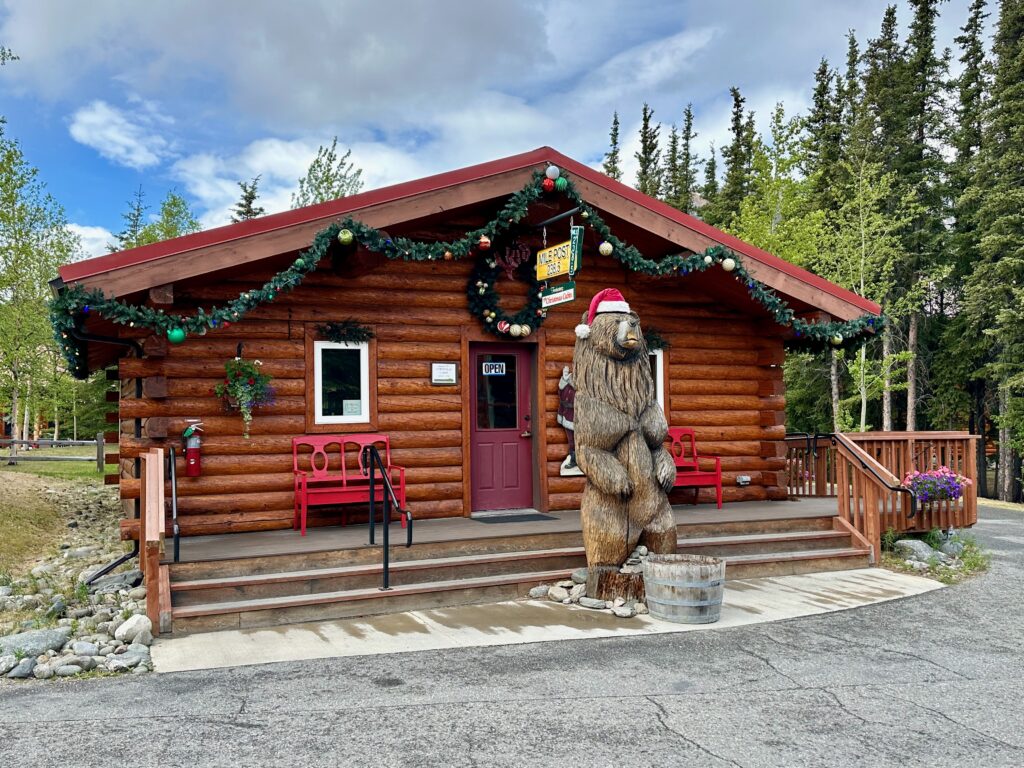
There are skads of fresh, young, new employees from all over the world. None of them have been trained. So, ordering a cup of coffee with a shot of espresso turned into a 10-minute ordeal. However, it is on a beautiful piece of property. Here is the view from the terrace just down a set of stairs from our room.
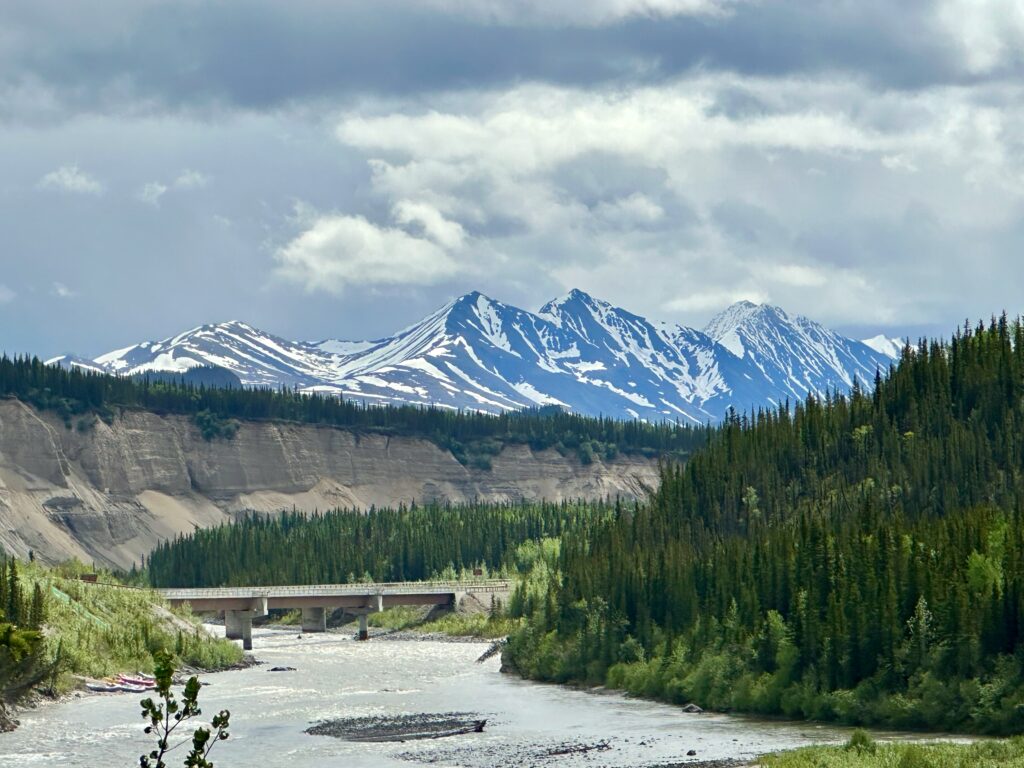
Here’s a close up of Mama Moose and Baby Moose eating breakfast on the opposite bank of the Nenana River, just minutes before the ultimate destination wedding occurred in the same spot. Sorry for the fuzzy zoom pics.
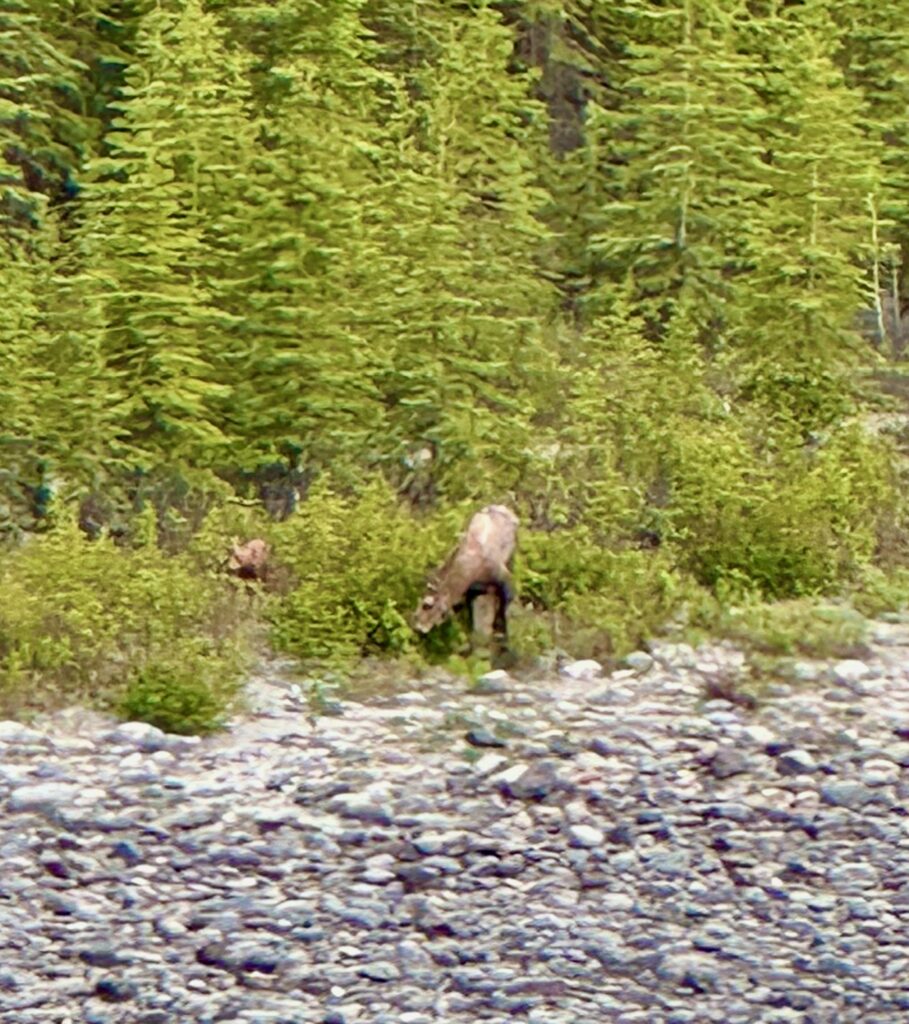
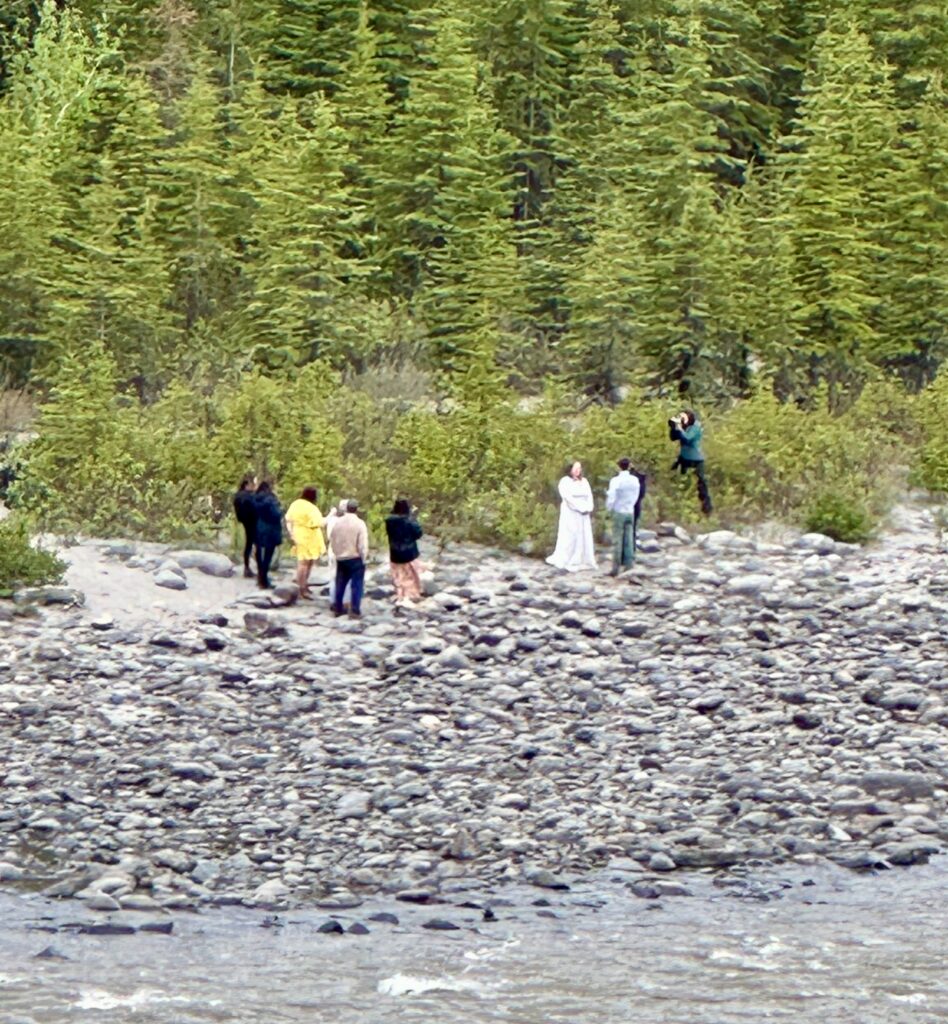
The river flows south from the Nenana Glacier, then turns west and north, forming the eastern boundary of Denali National Park and Preserve before joining the Tanana River and the waters ultimately end up in the Bering Sea.
A snowshoe hare hopped over to join me while I finished my coffee.
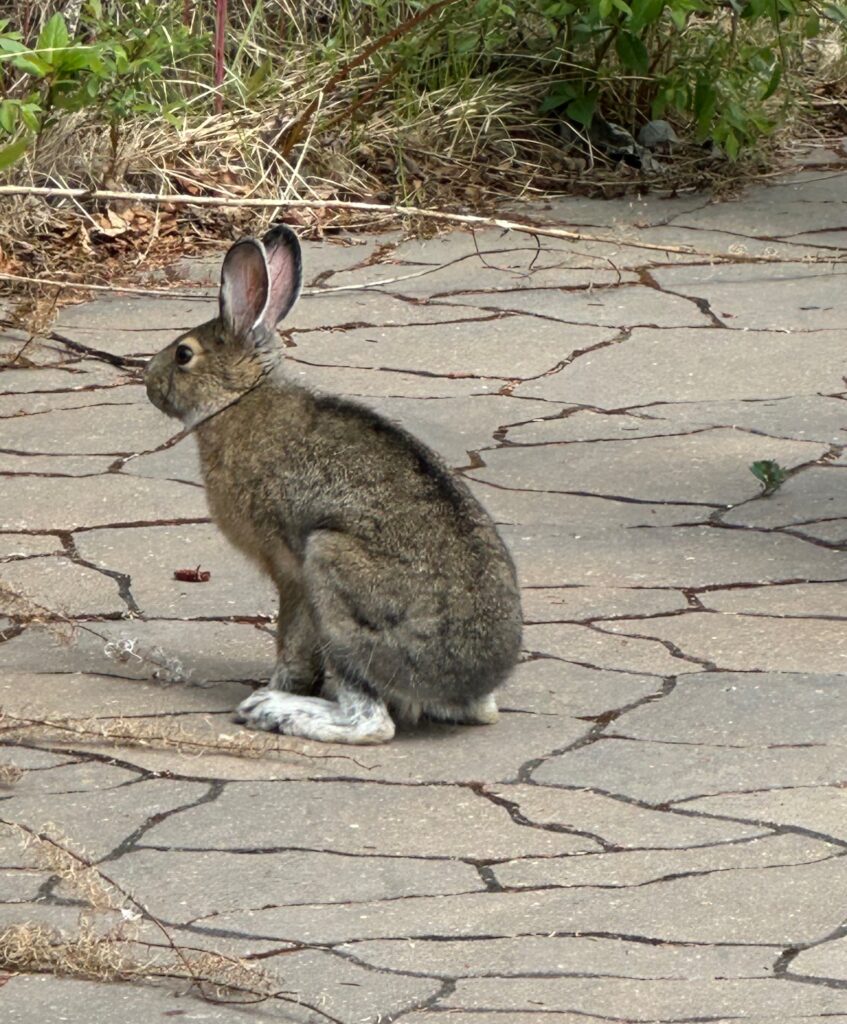
I even caught the morning train from Denali to Anchorage.
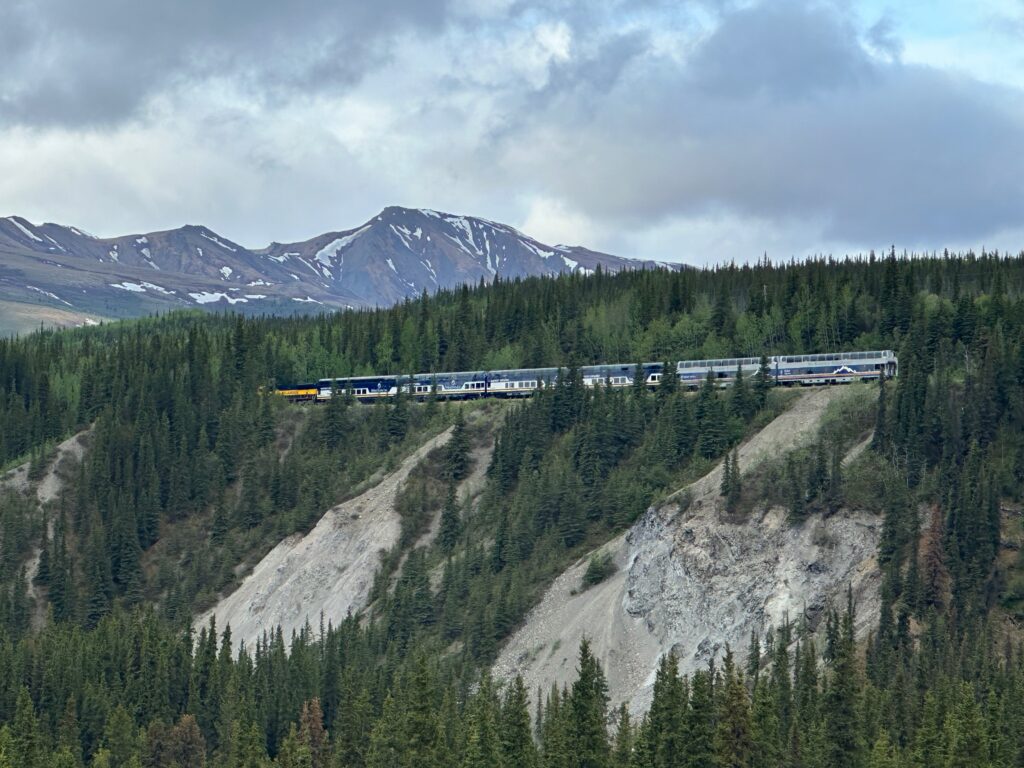
The main activity today was the Tundra Wilderness Tour. I thought the name was a marketing slogan, but I soon learned the difference between a national park and a designated national wilderness. Denali National Park contains a designated national wilderness area known as the Denali Wilderness. This wilderness area was established on December 2, 1980, and encompasses approximately 2,146,580 acres (3,354 square miles; 8,687 square kilometers) within the park. The Denali Wilderness protects the higher elevations of the central Alaska Range, including Denali, the highest mountain in North America.
National parks are highly managed to accommodate large numbers of visitors while preserving the environment. This includes designated campgrounds, educational programs, and amenities to make outdoor recreation accessible to people of all ages and abilities.
Wilderness areas are designated to preserve their “primeval character and influence,” remaining largely untouched by human activity. They are meant to maintain their natural conditions without permanent improvements or human habitation. Wilderness areas are managed to minimize human impact. This includes prohibitions on motorized vehicles, bicycles, and permanent structures. The goal is to keep these areas as pristine as possible.
The tour travels from the initial boreal forests through tundra to Sable Pass, then turns around at mile 43. It used to travel the full 92 miles, but the road has been closed due to the Pretty Rocks Landslide. Several portions of the road run alongside sheer cliffs that drop hundreds of feet at the edges. There are no guardrails, and the topography is vast.
We were very fortunate that the clouds broke, and we got the rare view of Mount Denali’s two peaks.
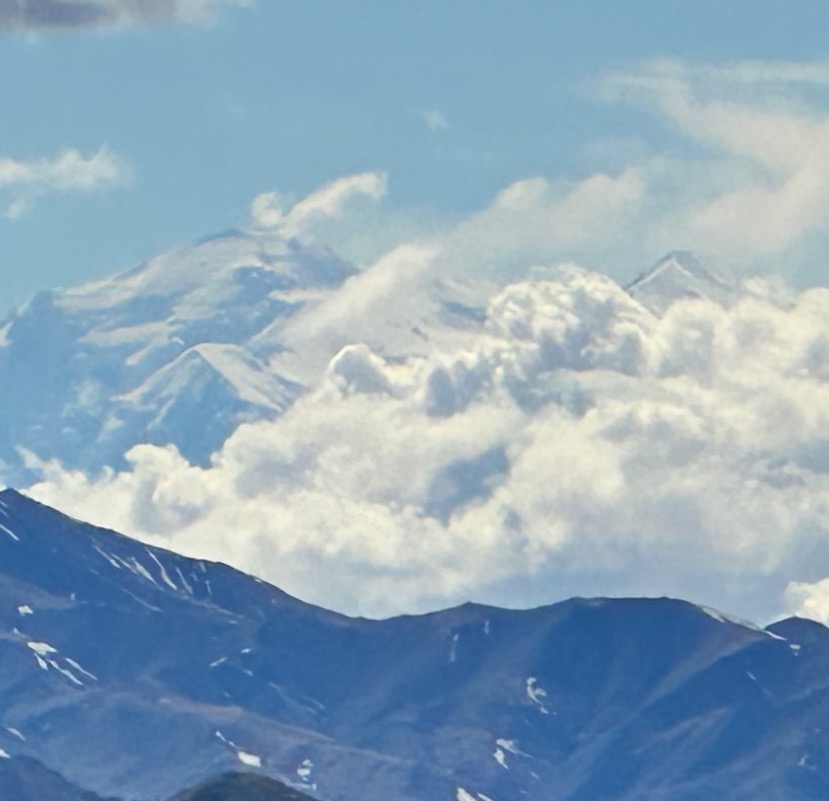
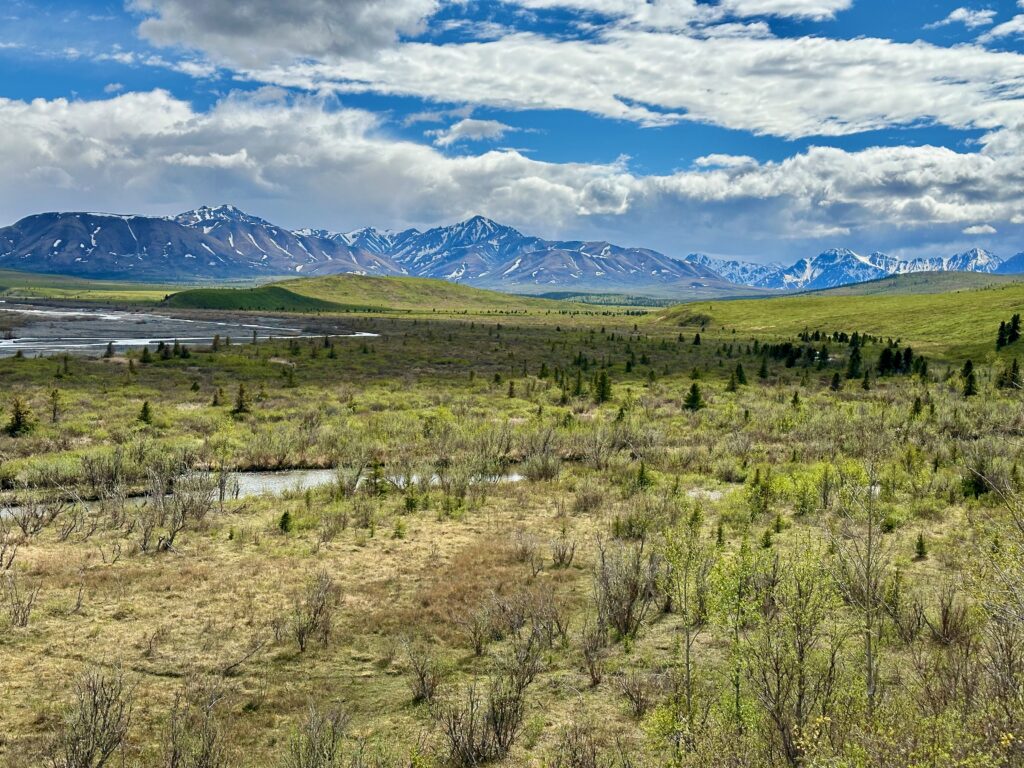
See if you can spot the little herd of Dall Sheep on the mountainside.
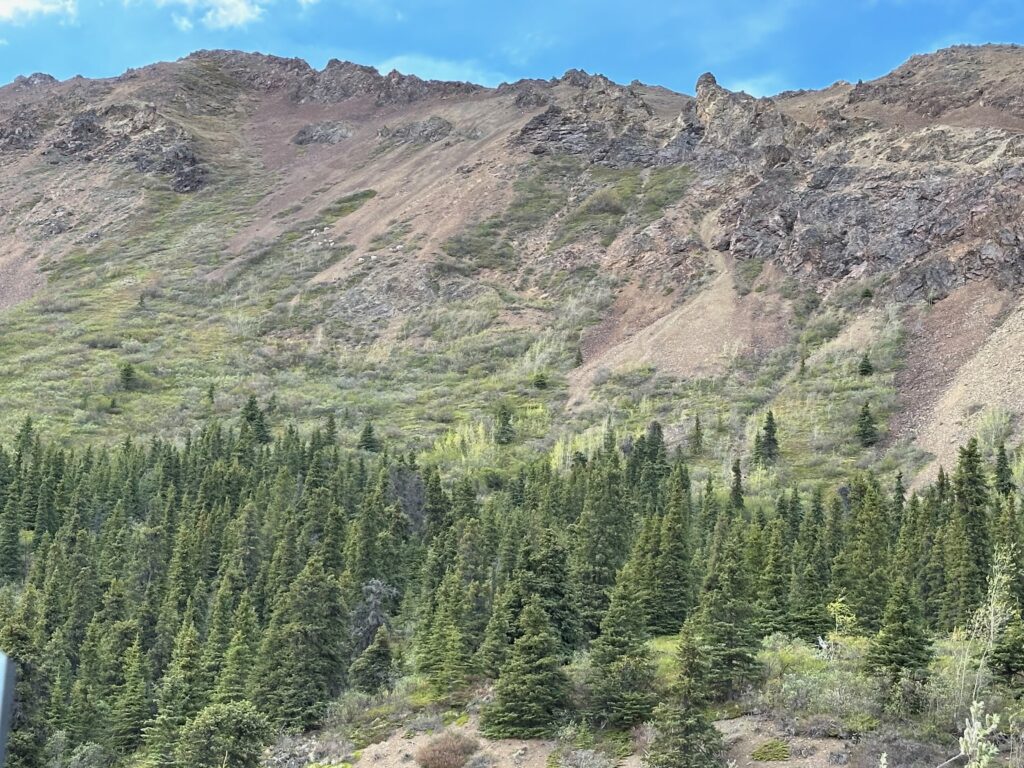
Here’s the close up.
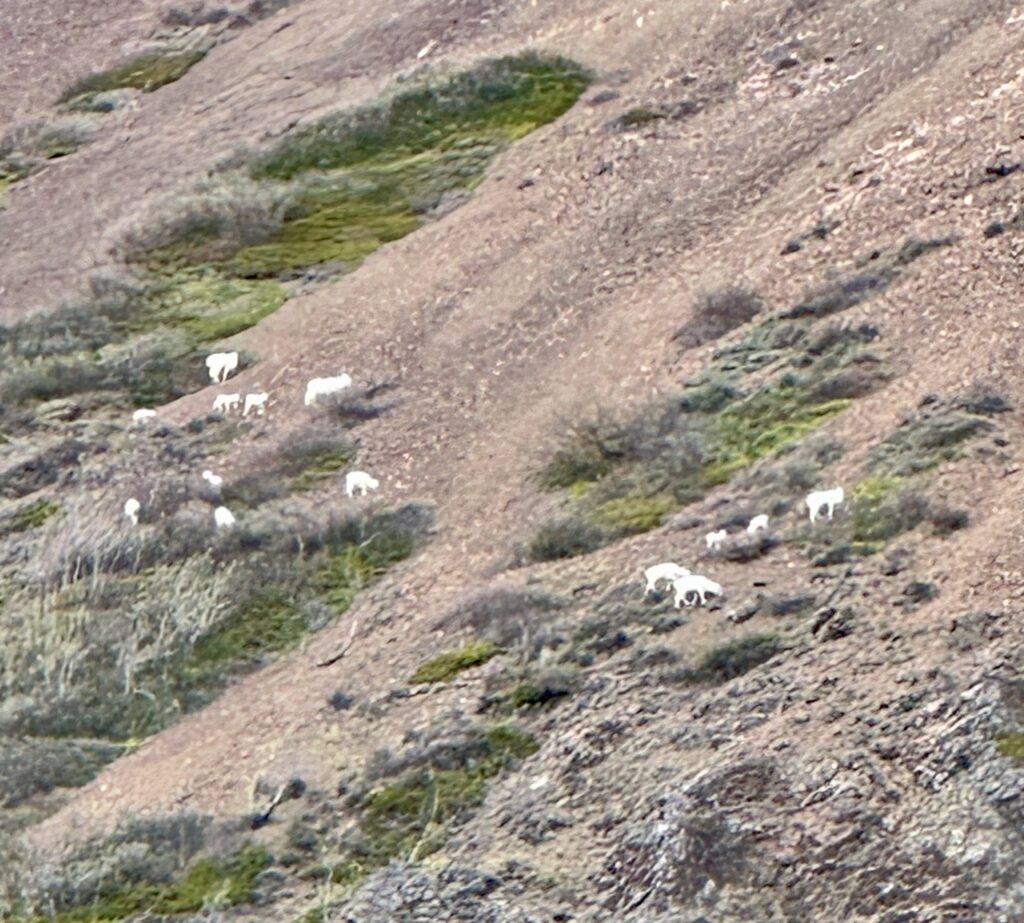
And Caribou cooling off in a deep snow bank.
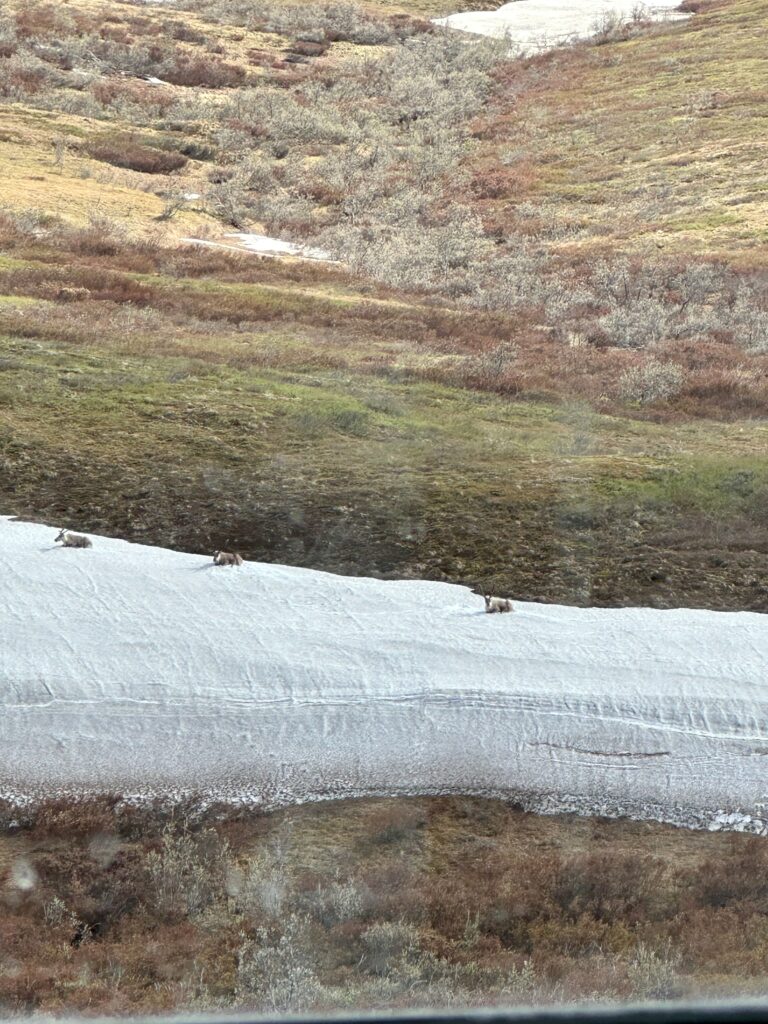
One last tundra shot.
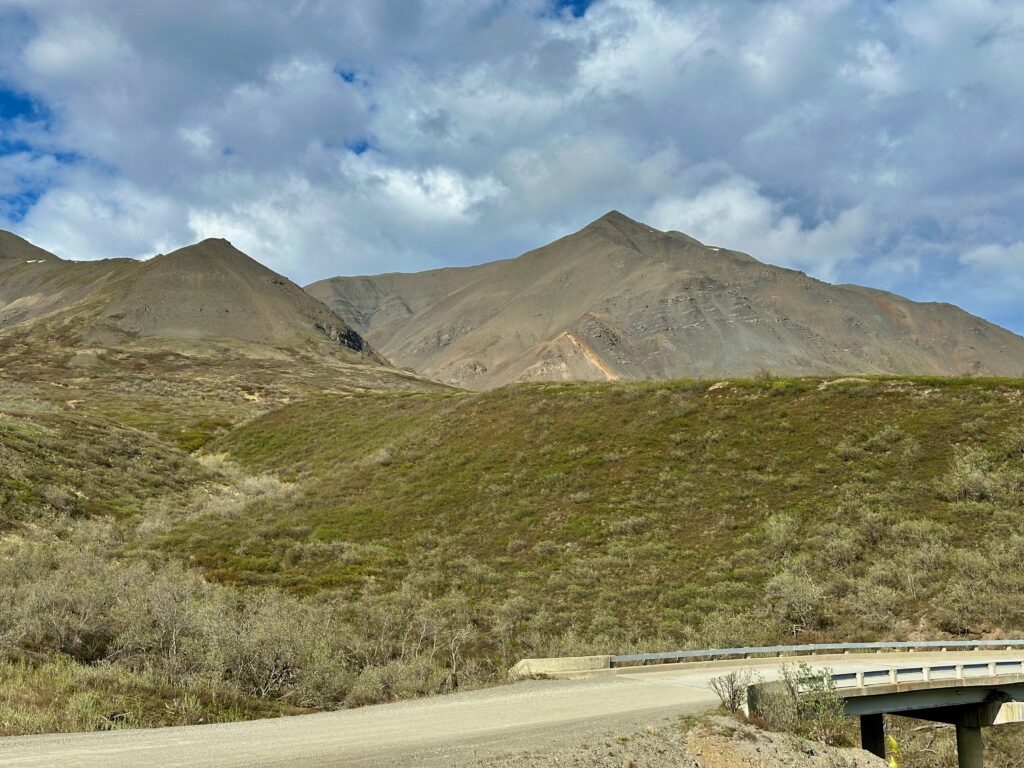
Tomorrow, we take the train back to Anchorage.
As always truly love your detailed description to the point of seeing, smelling and touching. But, I don’t get your photos, is there something I need to download! Love your trip! 🥰
Never mind just got them????
What a day! It’s amazing how much the landscape and wildlife are identical to Colorado, however on a much larger scale. What a national treasure.